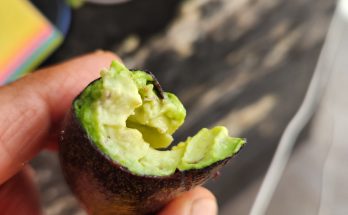By Juan Hernandez
“Faith is taking the first step, even when you don’t see the whole path yet.”
Martin Luther King
“I returned from the United States seven years ago and I don’t plan to leave anymore, because thank God I was able to start a business in my community of origin, in addition to the fact that many in the north see us migrants only as cheap labor,” said Israel, who kindly sold me a leash for my dog. Israel is one of the thousands of migrants who decided to return to their country. He, like other migrants, has his own venue at the 2023 León Fair and, with his tireless fighting spirit, shows us that the American dream can also be achieved here in his land.
This week, the U.S. Department of Homeland Security announced that it will seek to help undocumented migrants who are victims of labor abuses without fear of reprisals from their employers. The support includes protecting them with divided action which protects them from being deported. In addition, those who qualify will be able to obtain a work permit which would protect them from threats by their employers. This is an encouraging measure, especially because migrants are not only a fundamental part of the economic machinery of the United States, they are also the busiest workforce in activities with the highest risk. According to the International Organization for Migration, 164,000,000 migrants globally accept the dirtiest, most dangerous, and most difficult jobs called 3D because of the three adjectives beginning with the same word. Migrants are mostly associated with agricultural activities, operating stores, serving mini-supermarkets, selling on the street, or doing domestic work—all worthwhile activities by the way. But there are also examples of how they have managed to transcend into special tasks.
At the León Fair, Armando came to us at the stand of the Offices for Migrants and International Liaison. Armando was a migrant in the U.S. for 25 years, and he started in the health care industry as cleaning staff. He managed to specialize until he got a strategic position that helped him return to Mexico and have his micro-enterprise. “It is a very complicated industry, with tasks that not everyone wants to do. I jumped in, learned, and here I am, back in Mexico to continue progressing,” he told us.
During the COVID-19 pandemic, migrants were on the front lines, and involved in activities that could not be carried out remotely. In the United States alone, 74% of undocumented migrants are essential workers.
However, migrants’ return is not always accompanied by success. According to data from the Migration Policy Unit, until November, 2022 a total of 241,662 people of Mexican origin returned from the U.S. (13,787 of Guanajuato origin). And if we talk about deaths, disappearances, and detentions of migrants at the border the data is staggering. According to the Ministry of Foreign Affairs of the Federal Government, in the last three years (2019-2021) 1,478 Mexicans have died at the northern border. Of these, 308 were minors. There was also a 200% increase in the number of arrests which, according to estimates by the Information Center of the United States Customs and Border Protection Office, amounted to 1,734,686 in 2021.
The question that arises when millions of migrants come and go is how to inhibit undocumented migration? The answer is generating development opportunities in our respective states. Consequently, more countrymen would have options that encourage them to stay at home to see their children grow up, support their elderly in their health crises, and, why not, start their own business. The migration that we must promote is that of local talent, and that more Mexicans go out into the world to expand our identity in other countries, but that they do so in a normalized, orderly, and safe manner. In Guanajuato, for example, we have the “With You Yes” strategy which was promoted by Governor Diego Sinhue. It is supposed to strengthen the social fabric through the sum of resources, programs, and projects from the different agencies so that Guanajuato residents, including migrants, have development opportunities. Likewise, from the National Coordination of Migrant Assistance Offices (CONOFAM), we permanently seek the exchange of good practices and experiences that help us mitigate the needs of migrants.
As we have seen, migration, unfortunately, is a journey that does not always have a happy return. The millions of people who leave their homes year after year begin their journey without knowing if one day they will return and see their loved ones. According to the United Nations, there are 281 million migrants worldwide. Migrants seek to improve their quality of life and many of them achieve it and return to their home country. Like Israel and Armando, they continue progressing. But in other cases, the stories end in a nightmare. Often, migrants depend on themselves and their own efforts and expertise to overcome all kinds of misfortunes. It is our duty to accompany them and let them know that on their way there and back they are not alone.
And what do you think of the return of migrants?
Let’s talk about it at:
Facebook @juanhernandez.org
Twitter @JuanHernadezS
Juan Hernández collaborates with El Sol del Bajío. This column was published with permission.




